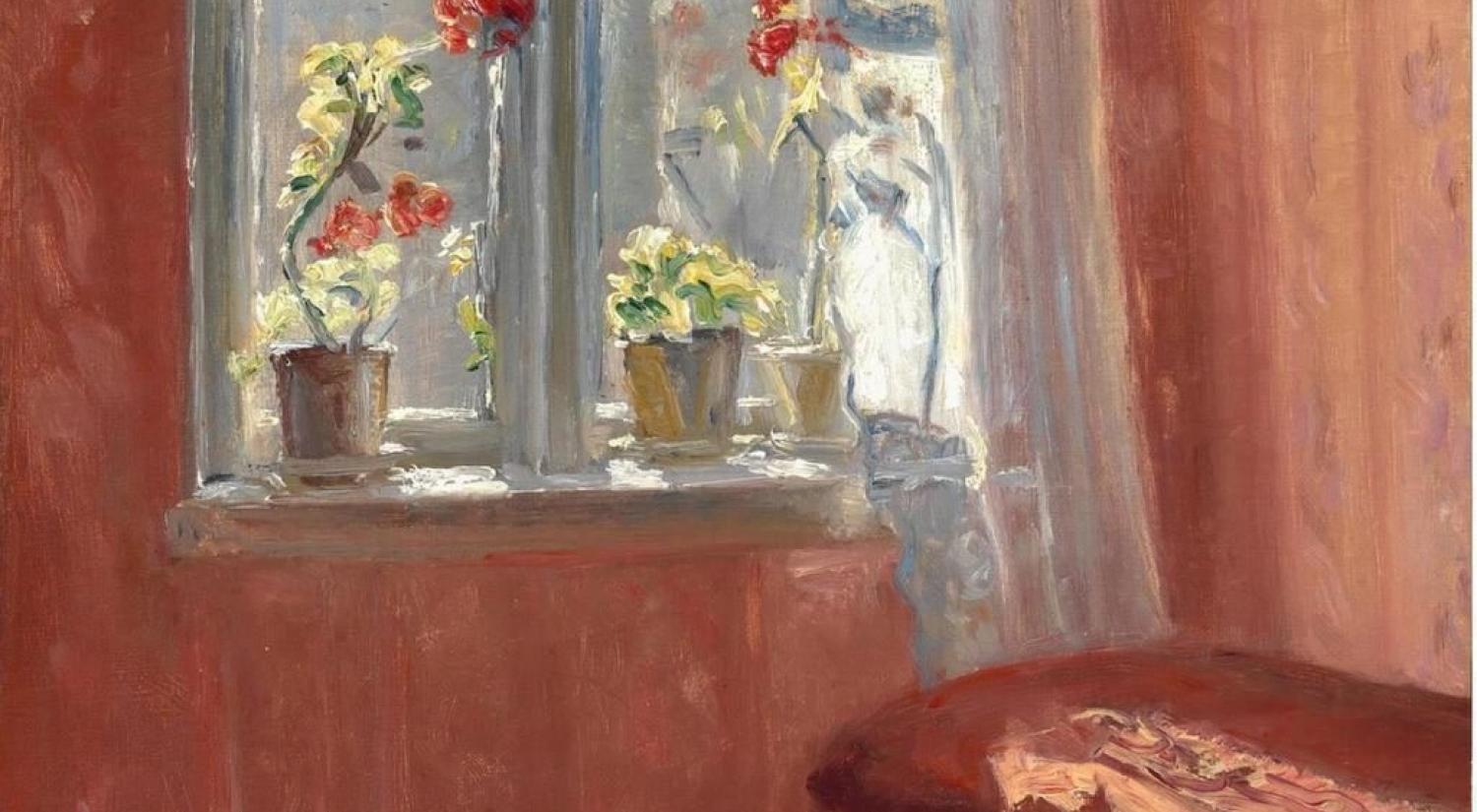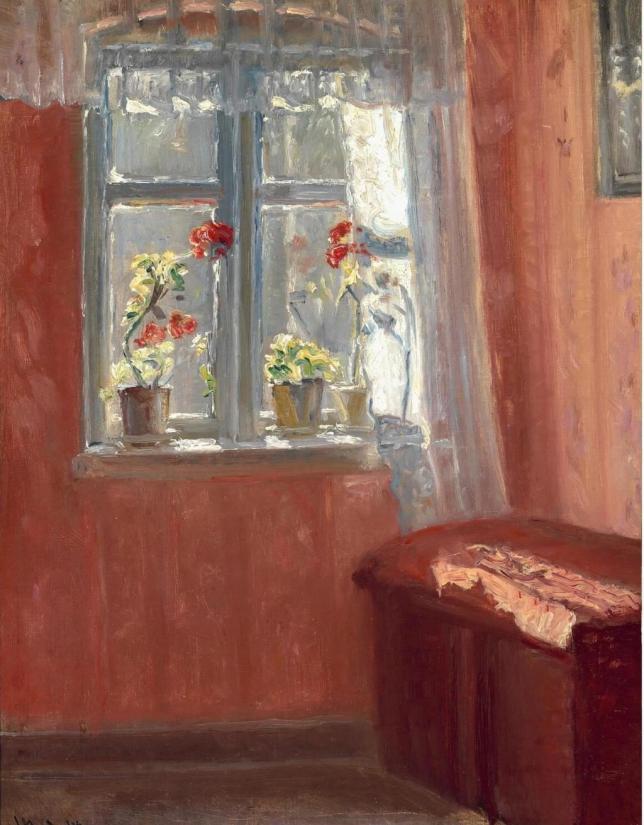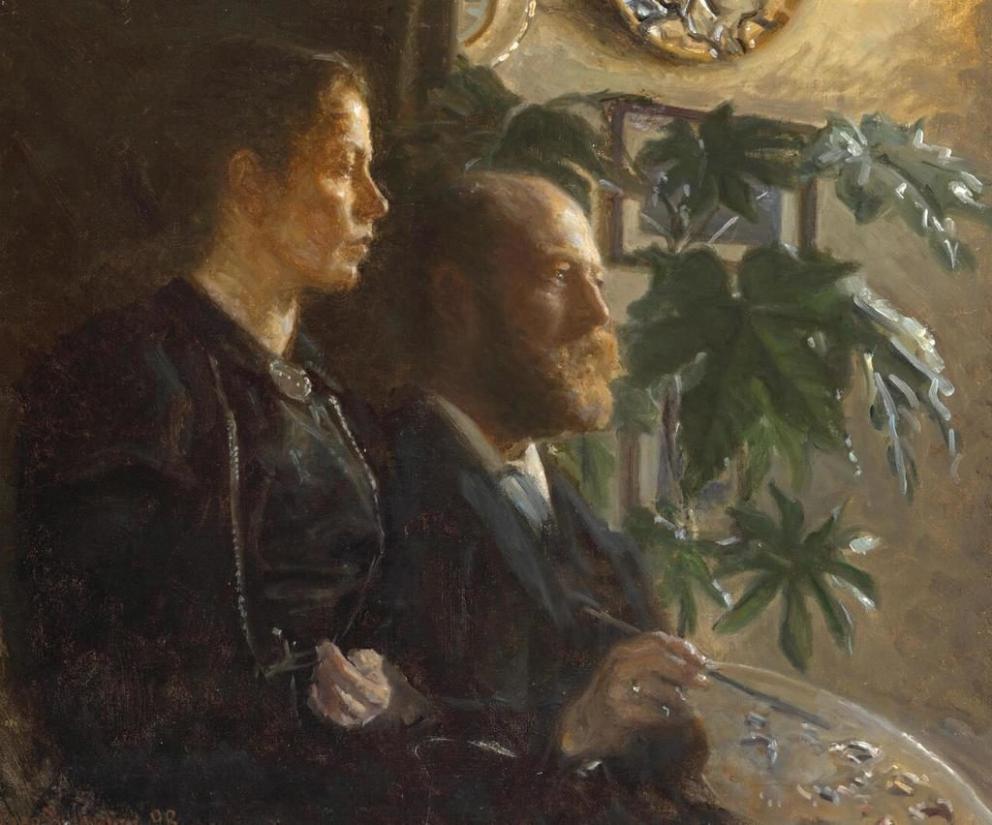Ribe Kunstmuseum adds nuance to its collection of Danish art with two significant but atypical pieces from the artist colony in the coastal village of Skagen in the northernmost part of Denmark during the latter three decades of the 19th century. Recently, with support from the New Carlsberg Foundation, the museum purchased Viggo Johansen’s Kunstnerens selvportræt med palet i hånden og hustruen Martha ved sin side (The Artist’s Self-Portrait with Palette in Hand and His Wife Martha by His Side) from 1898 and Michael Ancher’s Den røde stue (The Red Room) from 1914.
Michael Ancher’s studies in red
While Michael Ancher’s wife, Anna, often makes light itself the topic of her works, Michael Ancher is mostly known for portraying daily life by the sea and weather-beaten fishermen on the beach. However, Den røde stue clearly shows that Michael Ancher appreciates the qualities of Anna’s work. The scene of the painting is the living room in their home in Skagen. The light shines through the gossamer curtains and falls on the red geraniums on the window sill and the heavy lid of the wooden chest. The calmness is palpable. Here, Ancher suspends his preference for large, carefully arranged compositions and seeks to capture the effects of the light. In the painting of the red room he experiments with a more immediate and spontaneous expression. The key focus is on the materialization of the light in rich brushstrokes. It is also a study in different shades of red.
Viggo Johansen’s double portrait with his wife, Martha
In Johansen’s painting, the artist and his wife gaze on his work, which is placed outside the frame. He is shown standing, brush and palette in hand, while she stands upright by his side. Their faces light up in the dark, and the couple’s focused attention seems to reflect their bond. To the right stands a lush, green plant that captures the light in a manner reminiscent of Ancher’s painting. Martha loyally supported her husband. She was good with words and handled the correspondence with potential buyers of Johansen’s pictures, just as she would also clean his paintbrushes and hold his easel steady on windy days. The painting also relates to certain classical artistic genres: the portrait, the self-portrait and the double portrait. Several of the Skagen Painters excelled in the less common genre of the double portrait, including Anna and Michael Ancher, who painted Dagens arbejde bedømmes (Appraising the Day’s Work) from 1883, and P. S. and Marie Krøyer, who similarly co-created Dobbeltportræt (Double Portrait) in 1890.
About Michael Ancher and Viggo Johansen
Michael Ancher (1849–1927) and Viggo Johansen (1851–1935) first met at the Royal Danish Academy of Fine Arts in Copenhagen. Ancher was accepted into the academy in 1871 and attended classes here until 1875. However, like Johansen, he never graduated. Both men broke away from the prevailing conservatism at the academy. In Skagen, the young artists found a wealth of new topics and a place where they could experiment freely with painting on their own terms. Ancher first visited Skagen in the summer of 1874, and the following summer, Johansen joined him. They both married in 1880, just one week apart; their respective brides were the cousins Anna and Martha. Ancher stayed in Skagen, where he lived his family until his death, while Johansen lived in Copenhagen but spent most summers in Skagen.





